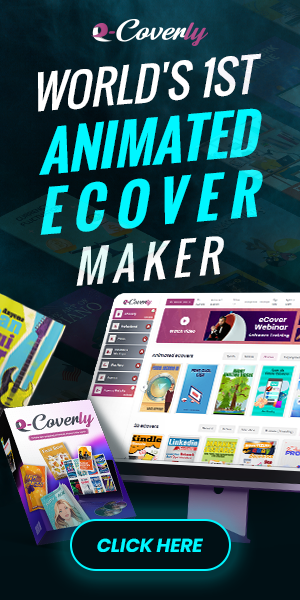How to Craft Email Templates That Generate Conversions
Introduction
Why email templates are important
Email templates are important because they provide a consistent and professional look to your emails. They save time and effort by allowing you to easily create and send personalized messages to your recipients.
With well-crafted email templates, you can ensure that your emails are visually appealing, easy to read, and optimized for conversions. Additionally, templates help maintain brand consistency and ensure that your messaging aligns with your overall marketing strategy.
By using email templates, you can streamline your email marketing efforts and increase the effectiveness of your campaigns.
Benefits of using email templates
Using email templates has several benefits. Firstly, it saves time and effort as you don't have to start from scratch every time you need to send an email. Templates provide a pre-designed structure that can be easily customized with your content.
Secondly, email templates ensure consistency in your communication. By using a standardized template, you can maintain a professional and cohesive brand image across all your emails.
Thirdly, templates can help improve the efficiency of your email marketing campaigns. With a well-designed template, you can easily include relevant information, call-to-action buttons, and personalized elements to increase conversions.
Overall, using email templates is a valuable strategy for businesses looking to streamline their email communication and maximize their conversion rates.
Overview of the article
In this article, we will provide an overview of the key elements to consider when crafting email templates that generate conversions. Email marketing is a powerful tool for businesses to engage with their audience and drive sales.
However, simply sending out generic emails is not enough to achieve the desired results. Effective email templates require careful planning and consideration of the target audience, the message content, and the design.
By following the tips and strategies outlined in this article, you will be able to create email templates that grab attention, compel action, and ultimately generate conversions for your business.
Understanding Your Audience
Identifying your target audience
Identifying your target audience is a crucial step in crafting effective email templates that generate conversions. Understanding who your audience is and what their needs, preferences, and pain points are will allow you to tailor your email content to resonate with them.
By conducting market research, analyzing customer data, and creating buyer personas, you can gain valuable insights into the demographics, interests, and behaviors of your target audience. This knowledge will help you create personalized and compelling email templates that speak directly to your audience, increasing the likelihood of generating conversions and driving business success.
Researching audience preferences
When crafting email templates that generate conversions, one crucial step is researching audience preferences.
Understanding what your target audience wants and needs can greatly improve the effectiveness of your email campaigns. By conducting thorough research, you can gather valuable insights into their preferences, pain points, and interests.
This information can then be used to tailor your email templates to resonate with your audience, increasing the chances of generating conversions. Whether it's through surveys, analyzing customer data, or studying industry trends, taking the time to research your audience's preferences is an essential component of creating successful email templates.
Segmenting your email list
Segmenting your email list is a crucial step in crafting effective email templates that generate conversions. By dividing your subscribers into specific groups based on their interests, demographics, or behavior, you can tailor your email content to meet their unique needs and preferences.
This targeted approach allows you to deliver more relevant and personalized messages, increasing the chances of engagement and conversion. Whether you segment your list by industry, location, or past purchase history, the goal is to send the right message to the right people at the right time.
With segmentation, you can create email templates that resonate with your audience, leading to higher conversion rates and ultimately, business success.
Designing Effective Email Templates
Choosing the right email template format
When it comes to choosing the right email template format, there are several factors to consider. First, think about the purpose of your email. Are you sending a promotional offer, a newsletter, or a transactional message?
Each type of email may require a different format to effectively convey your message. Additionally, consider the target audience and their preferences. Some people may prefer a simple and clean design, while others may respond better to a more visually engaging template.
Finally, think about the overall branding and tone of your company. Your email template should align with your brand image and reflect the desired tone of your message. By carefully considering these factors, you can select the right email template format that will generate conversions and effectively communicate with your audience.
Creating a visually appealing design
When it comes to creating a visually appealing design for your email templates, there are a few key elements to consider. First, choose a clean and professional layout that is easy to read and navigate.
Use a consistent color scheme and font style that aligns with your brand identity. Incorporate eye-catching images and graphics that enhance the overall visual appeal of your emails. Additionally, make sure your design is responsive and mobile-friendly, as more and more people are accessing emails on their smartphones and tablets.
By paying attention to these design elements, you can create email templates that not only capture the attention of your audience but also generate conversions.
Optimizing for mobile devices
In today's digital age, optimizing email templates for mobile devices is crucial for businesses to effectively reach and engage with their target audience. With the increasing number of people accessing emails on their smartphones and tablets, it is important to ensure that email templates are responsive and mobile-friendly.
This means designing templates that adapt to different screen sizes, load quickly, and have easy-to-click buttons and links. By optimizing email templates for mobile devices, businesses can enhance the user experience, increase open and click-through rates, and ultimately generate more conversions.
Crafting Compelling Subject Lines
Importance of subject lines
The importance of subject lines in email templates cannot be overstated. Subject lines are the first thing recipients see when they receive an email, and they play a crucial role in determining whether or not the email will be opened.
A compelling subject line can grab the reader's attention and entice them to open the email, while a dull or generic subject line may cause the email to be ignored or even marked as spam.
Crafting effective subject lines is essential for generating conversions because they can significantly impact the open rates and click-through rates of your emails. By using attention-grabbing language, personalization, and relevance, you can increase the chances of your emails being opened and ultimately lead to higher conversion rates.
Tips for writing attention-grabbing subject lines
When it comes to writing attention-grabbing subject lines for your email templates, there are a few key tips to keep in mind.
Firstly, it's important to be concise and to the point. Your subject line should be short and compelling, enticing the reader to open your email.
Secondly, consider using personalization techniques to make your subject line more engaging. By addressing the recipient by name or including personalized details, you can create a sense of connection and relevance.
Lastly, don't be afraid to experiment with different subject line strategies. A/B testing can help you determine which approaches are most effective in capturing your audience's attention. Remember, a well-crafted subject line can significantly increase your email open rates and ultimately lead to higher conversions.
A/B testing subject lines
A/B testing subject lines is a crucial step in crafting effective email templates that generate conversions. Subject lines are the first thing recipients see when they receive an email, and they play a significant role in determining whether the email will be opened or ignored. A/B testing allows you to compare different subject lines and identify which ones resonate best with your audience.
By testing different variations, you can optimize your subject lines to increase open rates, click-through rates, and ultimately, conversions. It is important to continually test and refine your subject lines to ensure you are maximizing the impact of your email campaigns.
Writing Persuasive Email Copy
Understanding the psychology of persuasion
Understanding the psychology of persuasion is crucial when it comes to crafting email templates that generate conversions. By understanding the underlying principles of human behavior and decision-making, you can create emails that effectively influence and persuade your audience.
From leveraging social proof to appealing to emotions, a deep understanding of persuasion psychology allows you to tailor your email content in a way that resonates with your readers and compels them to take action.
Whether it's using persuasive language, incorporating storytelling techniques, or employing scarcity tactics, the psychology of persuasion is a powerful tool that can significantly impact the success of your email marketing campaigns.
Structuring your email copy
When it comes to structuring your email copy, it's important to consider the flow and organization of your message. Start by introducing yourself or your company in a clear and concise manner.
This helps establish credibility and builds trust with your recipients. Next, focus on the main purpose of your email and communicate it effectively. Use bullet points or subheadings to break down your content into easily digestible sections. Additionally, make sure to include a strong call to action that prompts your readers to take the desired action.
Finally, end your email with a polite and professional closing, along with your contact information or any additional resources that may be helpful. By following these guidelines, you can create email templates that are structured in a way that maximizes conversions and effectively communicates your message.
Using persuasive language and storytelling
Using persuasive language and storytelling is a powerful technique to engage and captivate your audience. By carefully choosing your words and crafting a compelling narrative, you can create an emotional connection with your readers, making them more likely to take action.
Incorporating storytelling elements into your email templates can help you paint a vivid picture, evoke emotions, and ultimately drive conversions. Whether it's sharing a relatable anecdote, presenting a problem and offering a solution, or using testimonials to showcase the benefits of your product or service, persuasive language, and storytelling can effectively convey your message and persuade your audience to take the desired action.
Call-to-Action and Conversion Optimization
Importance of a strong call-to-action
The importance of a strong call-to-action cannot be overstated when it comes to crafting email templates that generate conversions. A call-to-action is the driving force behind encouraging readers to take the desired action, whether it's making a purchase, signing up for a newsletter, or downloading a resource.
Without a compelling and clear call-to-action, emails may fail to engage and convert recipients. A strong call to action should be concise, persuasive, and visually appealing, guiding the reader toward the next step with a sense of urgency. By incorporating a strong call-to-action in email templates, businesses can effectively drive conversions and achieve their marketing goals.
Designing effective call-to-action buttons
When it comes to designing effective call-to-action buttons, there are a few key factors to consider. Firstly, the color and placement of the button can greatly impact its visibility and clickability.
Using contrasting colors that stand out from the rest of the page can help draw attention to the button and encourage users to take action. Additionally, the size and shape of the button should be carefully chosen to make it easy for users to click on.
A button that is too small or has an unusual shape may be overlooked or difficult to interact with. Lastly, the text on the button should be clear, concise, and compelling. Use action-oriented language that clearly communicates what will happen when the button is clicked, such as 'Sign Up Now' or 'Get Your Free Trial'.
By considering these factors, you can design call-to-action buttons that effectively drive conversions and encourage user engagement.
Tracking and optimizing conversions
Tracking and optimizing conversions is a crucial aspect of any email marketing strategy. By closely monitoring the performance of your email templates, you can identify which ones are generating the most conversions and make data-driven decisions to improve their effectiveness.
Tracking conversions allows you to measure the success of your email campaigns, understand customer behavior, and identify areas for improvement. With the insights gained from tracking and optimizing conversions, you can continuously refine your email templates to generate even higher conversion rates and drive business growth.














